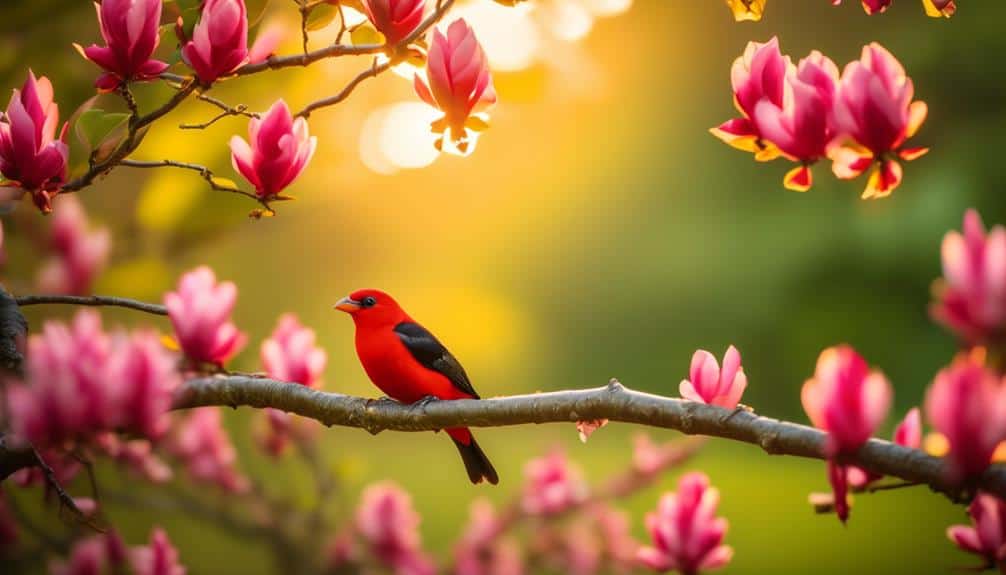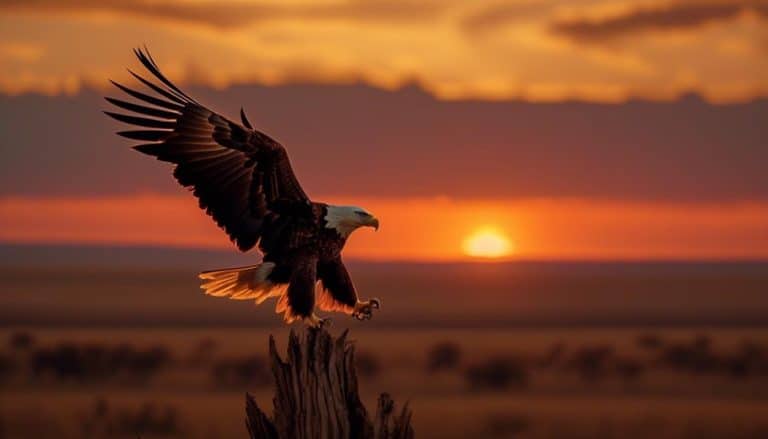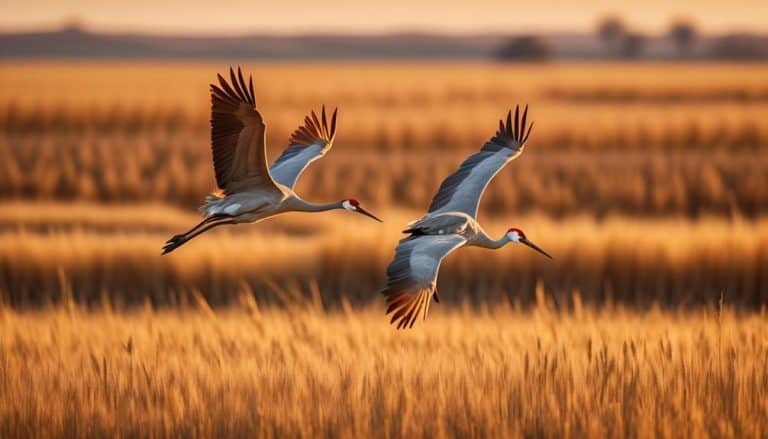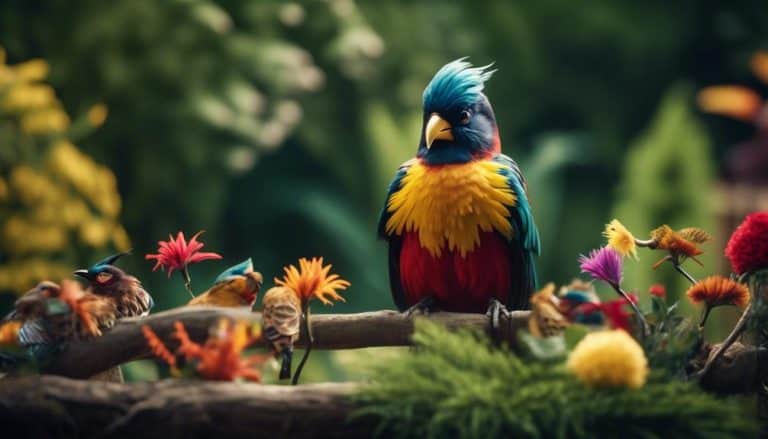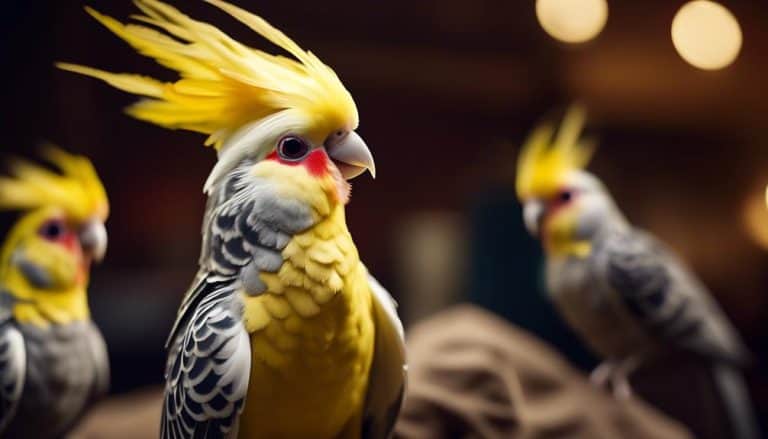As I stroll through the lush forests and vibrant meadows of Georgia, I can't help but notice the crimson streaks that paint the landscape. Red birds, like flashes of fire amidst the greenery, captivate my attention and spark my curiosity.
These avian inhabitants hold a certain allure, their presence as enigmatic as the secrets they carry. Join me as I uncover the mysteries of these red birds in Georgia, as we explore their habitat, behaviors, and the conservation efforts dedicated to their survival.
Common Red Birds in Georgia
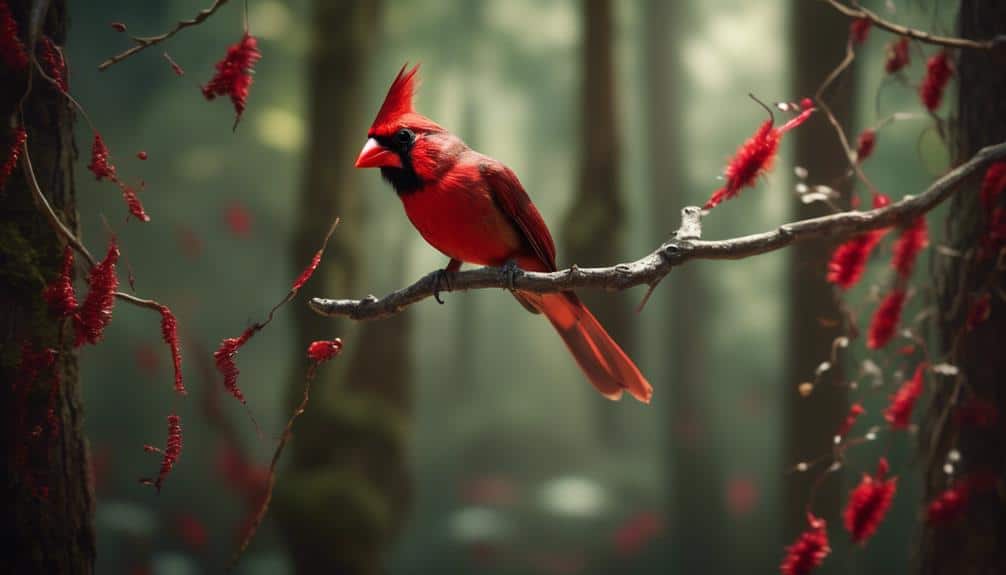
Common red birds in Georgia, such as the Northern Cardinal and the Red-shouldered Hawk, are notable for their vibrant plumage and distinctive features. These birds, widely seen throughout the state, have intriguing migration patterns and unique feeding habits.
Regarding red bird migration patterns, the Northern Cardinal is a year-round resident in Georgia, meaning it doesn't migrate. However, some individuals may shift their territories slightly during the colder months, moving closer to food sources. On the other hand, the Red-shouldered Hawk is a partial migrant, with some individuals leaving Georgia during the winter and returning in the spring. This migration behavior is influenced by the availability of prey and weather conditions.
When it comes to red bird feeding habits, both the Northern Cardinal and the Red-shouldered Hawk exhibit interesting behaviors. The Northern Cardinal primarily feeds on seeds, fruits, and insects. They're often seen foraging on the ground, using their strong beaks to crack open seeds. The Red-shouldered Hawk, on the other hand, is a carnivore and preys on small mammals, reptiles, and amphibians. They use their sharp talons and beak to capture and consume their prey.
Understanding the migration patterns and feeding habits of these common red birds in Georgia provides valuable insights into their ecological roles and helps us appreciate their presence in our environment.
Habitat and Distribution of Red Birds
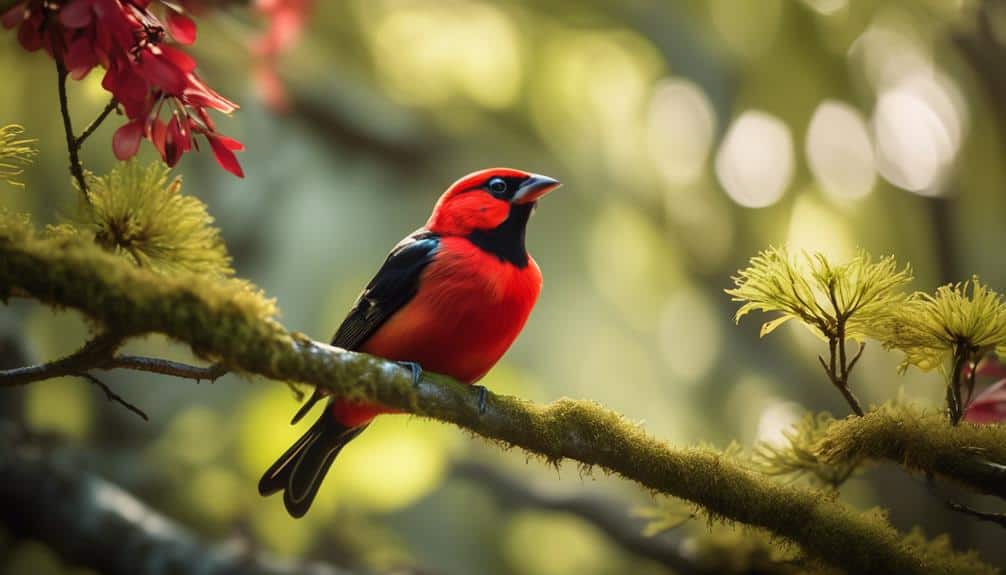
The habitat and distribution of red birds in Georgia provide crucial insights into their ecological adaptations and range within the state. Red birds, such as the Northern Cardinal and the Scarlet Tanager, can be found in a variety of habitats, including forests, woodlands, and urban areas. These birds are known for their vibrant red plumage, which serves as a means of attracting mates and defending territories.
In terms of distribution, red birds can be found throughout Georgia, but their abundance and frequency vary depending on the region. For example, the Northern Cardinal is a year-round resident in the state and can be found in all counties, while the Scarlet Tanager is primarily a summer visitor and is more commonly found in the northern parts of the state.
Red bird migration patterns also play a significant role in their distribution within Georgia. Some species, like the Scarlet Tanager, are neotropical migrants, meaning they breed in Georgia during the summer months and then migrate to Central and South America for the winter. Other species, such as the Northern Cardinal, are non-migratory and can be found in the state year-round.
When it comes to breeding habits, red birds typically form monogamous pairs during the breeding season. Both males and females are involved in building the nest, incubating the eggs, and raising the young. The nests are usually constructed in shrubs or trees, providing protection and camouflage for the vulnerable offspring.
Understanding the habitat and distribution of red birds in Georgia is essential for conservation efforts and the preservation of these beautiful and ecologically important species. By studying their migration patterns and breeding habits, we can better comprehend their ecological needs and work towards creating suitable habitats for their survival.
Behaviors and Characteristics of Red Birds
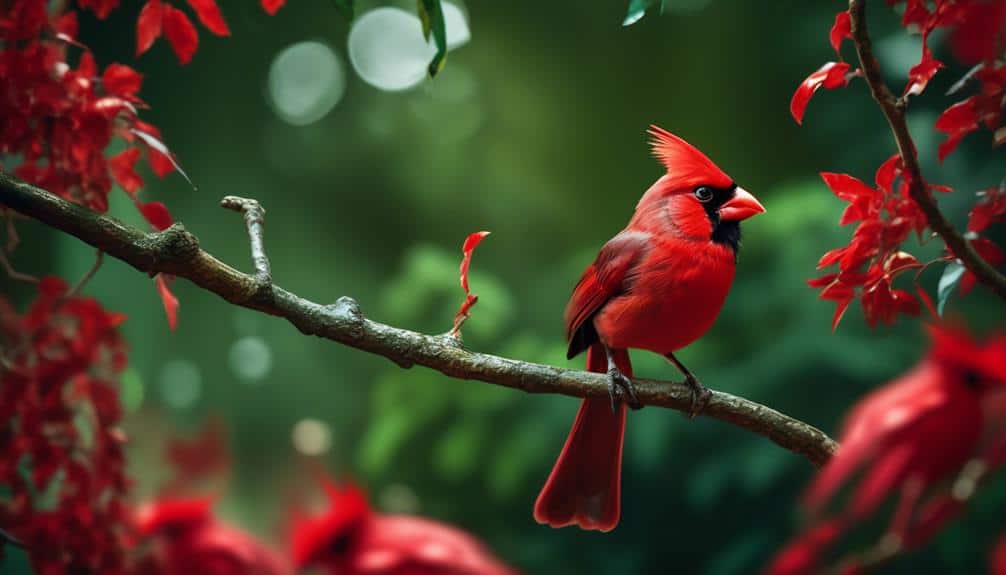
Red birds exhibit a variety of distinctive behaviors and characteristics that contribute to their ecological success and survival in Georgia's diverse habitats. Understanding their migration patterns and mating rituals provides valuable insights into their behavior.
Red bird migration patterns are fascinating and complex. These birds are known to undertake long-distance journeys, traveling between different regions in search of suitable habitats and food sources. They migrate during specific seasons, following established routes that have been passed down through generations. This instinctual behavior ensures their survival by allowing them to find optimal conditions for nesting and breeding.
Mating rituals of red birds are intricate and play a crucial role in their reproductive success. These rituals involve elaborate courtship displays, where the males showcase their vibrant plumage and sing complex songs to attract females. The females carefully evaluate these displays and choose a mate based on their attractiveness and fitness. Once a pair is formed, they engage in mutual grooming and nest-building activities to prepare for breeding. This cooperative behavior strengthens their bond and contributes to the successful rearing of their offspring.
Threats to Red Bird Populations in Georgia
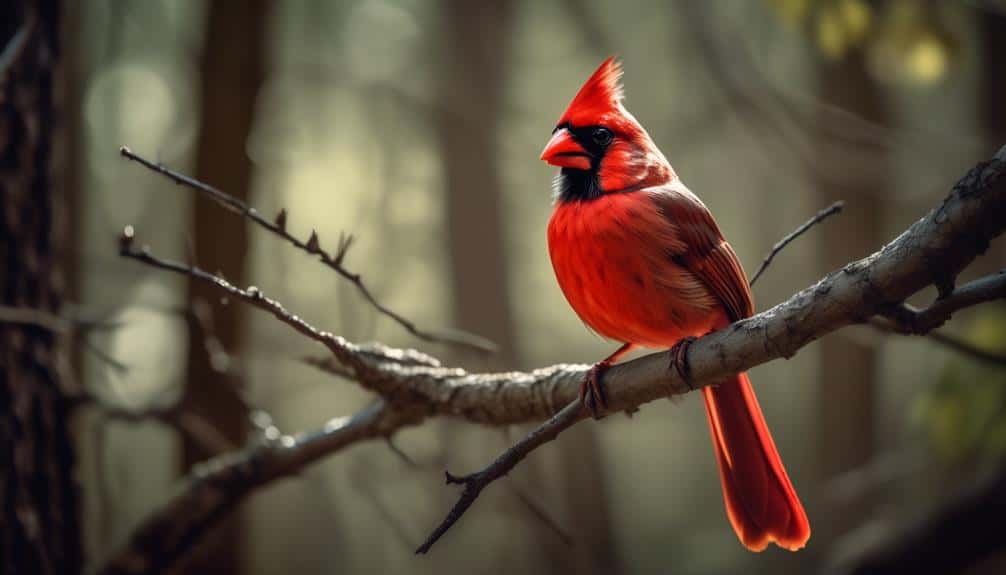
With a keen understanding of the behaviors and characteristics of red birds in Georgia, it's imperative to explore the various threats that pose a significant risk to their populations. One of the most pressing threats is the impact of climate change. Rising temperatures and changing precipitation patterns can disrupt the delicate balance of ecosystems that red birds rely on for food and shelter. This can lead to a decline in their populations as they struggle to adapt to these new conditions.
Another major threat to red bird populations in Georgia is the use of pesticides. While pesticides are intended to control pests and protect crops, they can have unintended consequences for non-target species like red birds. Pesticides can contaminate the birds' food sources, such as insects and seeds, leading to reduced reproductive success and overall population decline.
To mitigate the impact of climate change and pesticide use on red bird populations, it's crucial to implement conservation strategies. This includes habitat restoration and protection, as well as reducing the use of harmful pesticides and promoting sustainable farming practices. Additionally, public awareness and education campaigns can help raise awareness about the importance of protecting red birds and their habitats.
Conservation Efforts for Red Birds in Georgia
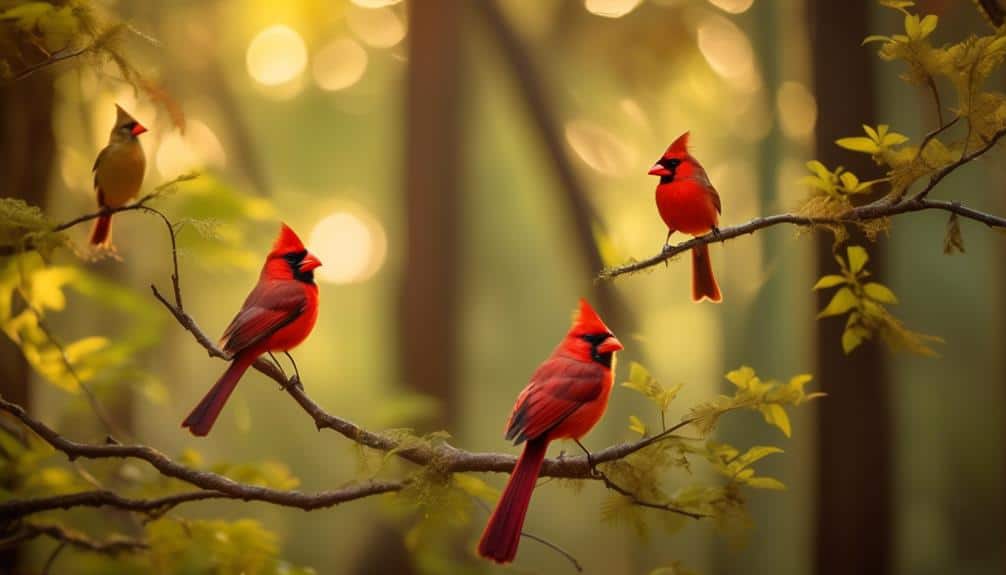
To address the conservation needs of red birds in Georgia, a comprehensive approach must be taken that focuses on protecting their habitats and promoting sustainable practices. The population trends of red birds in Georgia have been a cause for concern in recent years. Several initiatives have been undertaken to protect their habitats and ensure their survival.
One such initiative is the establishment of protected areas specifically for red birds. These areas are carefully managed to provide suitable nesting grounds, food sources, and shelter for the birds. Additionally, efforts have been made to restore and enhance existing habitats by planting native vegetation and removing invasive species.
Another important aspect of conservation efforts is the promotion of sustainable practices. This includes raising awareness among the public about the importance of preserving red bird habitats and the impact of human activities. Encouraging responsible land management practices, such as reducing pesticide use and maintaining a diverse range of plant species, can also contribute to the protection of red bird populations.
To engage the audience and provide a visual representation of these conservation efforts, the following table summarizes some of the key initiatives aimed at protecting red bird habitats in Georgia:
| Initiative | Description | Impact |
|---|---|---|
| Establishment of protected areas | Designated areas providing suitable habitats for red birds | Ensures the availability of nesting grounds |
| Habitat restoration and enhancement | Planting native vegetation and removing invasive species | Improves the quality of existing habitats |
| Promoting sustainable land management | Raising awareness about responsible practices and reducing pesticide use | Preserves habitat quality and food sources |
Through these conservation efforts, it is hoped that the declining population trends of red birds in Georgia can be reversed, ensuring their continued presence and contribution to the state's biodiversity.
Frequently Asked Questions
What Is the Average Lifespan of Red Birds in Georgia?
The average lifespan of red birds varies depending on the species and their distribution. Red birds in Georgia have an average lifespan of around 2-3 years, but this can be influenced by factors such as predation and habitat quality.
Are There Any Specific Red Bird Species That Are More Commonly Found in Urban Areas?
In urban areas, some red bird species are more commonly found. This information is crucial for red bird conservation efforts, as understanding their habitat preferences helps us protect and preserve their populations.
How Do Red Birds Communicate With Each Other?
Red bird calls are essential for communication and mate attraction. These calls vary in pitch and rhythm, conveying specific messages to other red birds. Additionally, red bird mating rituals involve elaborate displays and vocalizations to signal readiness to mate.
Can Red Birds Swim?
Yes, red birds can swim. While not their primary mode of transportation, some bird species, like ducks and geese, are known for their ability to swim. However, not all birds are capable of swimming due to their body structure and habits. Bird migration is a fascinating phenomenon that involves the long-distance movement of birds in response to changing seasons. During migration, birds cover vast distances, relying on their wings to fly rather than swimming.
Do Red Birds Migrate During the Winter in Georgia?
Yes, red birds do migrate during the winter in Georgia. Their migration is influenced by factors such as food availability and weather conditions. Understanding their behavior and diet helps us better understand their migration patterns.
Conclusion
After observing the common red birds in Georgia, it's evident that these vibrant creatures aren't only a sight to behold but also a symbol of resilience and survival. Their ability to adapt to diverse habitats and their distinctive behaviors make them truly remarkable.
However, the looming threats to their populations highlight the urgency for conservation efforts. Let's join hands in protecting these scarlet wonders, ensuring their melodious songs continue to grace our skies for generations to come.

